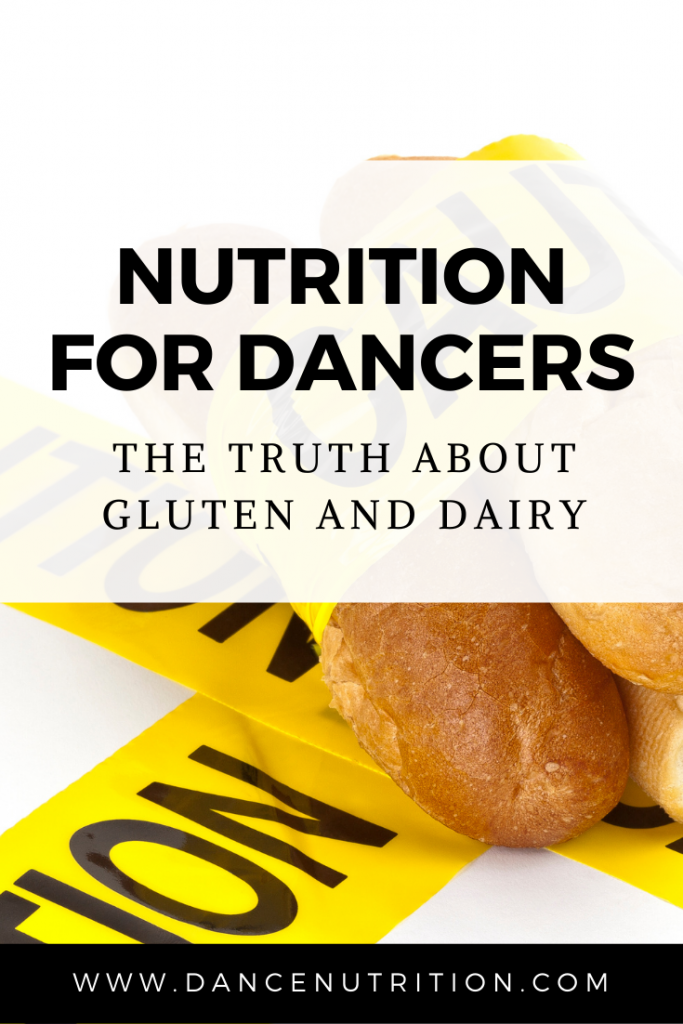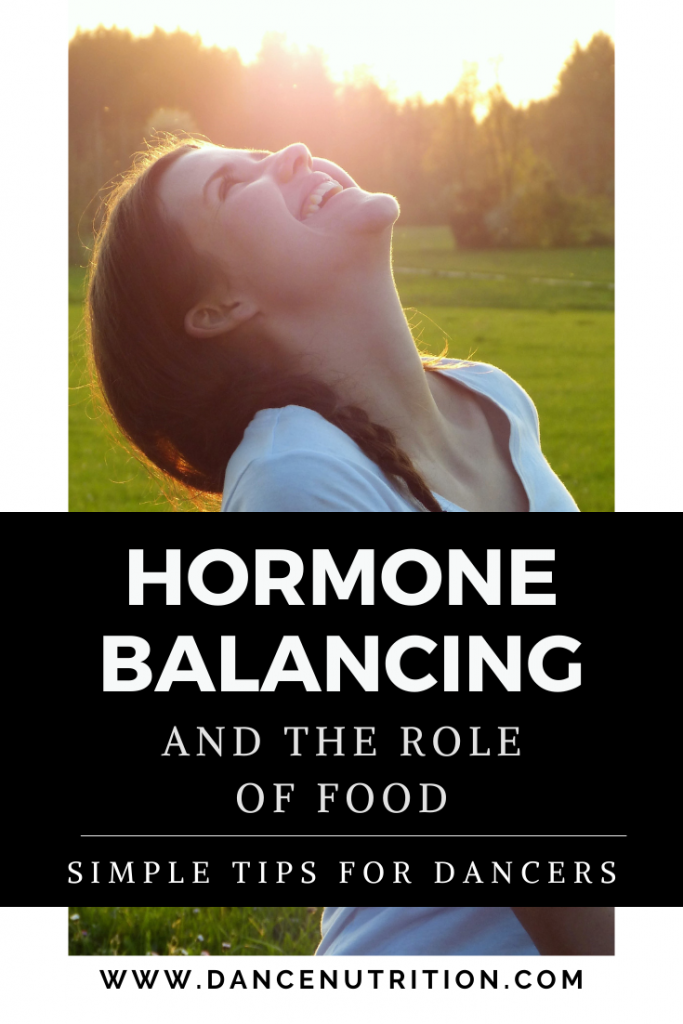Gluten and dairy have long been scrutinized in the pursuit of better health. Both are commonly blamed for a wide range of issues— from inflammation and hormonal imbalances to digestive discomfort and acne. With promises of clearer skin, improved mood, and reduced bloating, many dancers turn to gluten- and dairy-free diets in hopes of relief.
While seemingly hopeful and relatively accessible (given the rise in dairy-free and gluten-free alternatives), it’s important to decipher what might help or hinder your goals. In this article, we’ll explore what every dancer should know about gluten- and dairy-free diets and help you determine if these restrictions are right for you.
When Is A Gluten- and Dairy-Free Diet Necessary?
Conditions like Celiac disease, an autoimmune disorder where the body cannot properly digest gluten, or lactose intolerance are well-established reasons for removing gluten or dairy, respectively, from your diet. Keep in mind that Celiac disease affects about 1% of the population and food sensitivity testing remains questionable. If you have a diagnosed condition like this, working with a licensed dietitian is encouraged to develop a meal plan that prioritizes both your physical health and mental well-being.
The Pitfalls of Gluten-Free, Dairy-Free
The focus on gluten and dairy as the primary culprits of various health woes began in the early 2000s, but the obsession has only grown. Restricting foods can cause us to obsess over what we eat instead of how we eat. This shift often leads to an unhealthy preoccupation with “acceptable” and “unacceptable” foods, causing stress, guilt, and anxiety— a recipe for disordered eating.
What’s Going on With My Stomach?
Dancers who eliminate gluten or dairy in hopes of finding relief from digestive discomfort may be struggling with functional digestive disorders— bloat, gas, or constipation, all of which go misdiagnosed and are often unrelated to gluten or dairy.
Stress and anxiety are also culprits behind digestive discomfort. I recently conducted a poll on Instagram (this is merely observation, not scientific data), and 80% of dancers who follow a gluten-free diet report feeling anxiety around food. One can argue that anxiety, rather than the food itself, might be a major factor in digestive distress. So before you automatically blame your digestive issues on gluten or dairy, ask yourself: could stress or anxiety be playing a role?
I Eliminated Gluten and Dairy. Now I Feel Better!
You’re experience is valid, but one thing to consider is the nocebo effect. This phenomenon occurs when merely thinking that something (like gluten) makes you feel sick causes the supposed physical symptoms. This differs from the placebo effect, in which people experience a positive response or improvement after believing they’ve received a beneficial treatment. Placebos are commonly used in research as a comparative pseudo (or fake) treatment.
Are Hormonal Imbalances Tied to Gluten and Dairy?
Hormonal changes are a natural part of life. Dancers between 9 and 16 often experience the unpredictability of puberty, which brings irregular periods, mood swings, and other uncomfortable symptoms. Adult dancers may also face perimenopause— years of fluctuating estrogen and progesterone levels leading up to menopause commonly during the ages of 45 to 55. While these hormonal shifts can be uncomfortable, they are completely normal.
There’s no solid evidence to support the idea that a gluten-free or dairy-free diet can “balance” hormones or alleviate symptoms like mood swings, bloating, or irregular periods. The reality is that such dietary restrictions can potentially do more harm than good, especially when dealing with more severe hormonal imbalances like PCOS, Hypothalamic Amenorrhea (HA), or Hashimoto’s thyroiditis. In fact, food restrictions can worsen symptoms, especially in cases of HA, often resulting from excessive exercise and insufficient calorie intake.
For those with Hashimoto’s, despite popular trends, there’s no evidence suggesting that a gluten-free diet is beneficial unless the individual also has Celiac disease.
Acne: Does Dairy Cause Breakouts?
Dairy has long been demonized as a major contributor to acne. A 2018 meta-analysis suggested a possible link between dairy and acne, but the evidence is far from conclusive. The studies were based on self-reported data, which is notoriously unreliable. While some studies found an association, others didn’t. Some even suggested that certain types of dairy (like whole or low-fat milk) may not be linked to acne at all, and others (like skim milk) do increase the odds of developing acne.
Interestingly, there is a strong correlation between acne and disordered eating behaviors. Individuals who restrict their food choices— especially through diet culture-driven habits like choosing skim milk— may be at a higher risk of developing acne due to stress, anxiety, and poor body image. So, could the restriction itself be contributing to acne rather than dairy? Christy Harrison explains this on her podcast (highly suggest you listen), stating that “disordered eating is a confounding variable that should be controlled for in the research…” To further the argument, Christy also explains that those already presenting with acne might struggle with the stress of poor body image, increasing their risk of developing disordered eating.
The American Academy of Dermatology states that “limited evidence” suggests that dairy, especially skim milk, may influence acne. However, they also emphasize that “no specific dietary changes are recommended” for acne management. Given the lack of consistent evidence, I would not recommend cutting out dairy for acne concerns.
What’s the Point?
While following gluten- and dairy-free diets is now wildly accessible given the expansion of these foods on grocery shelves, including dairy and gluten in a dancer’s diet can offer a range of benefits. Dairy is a great source of calcium, vitamin D, and protein, which support bone health and muscle recovery. Gluten-containing foods, like whole grains, offer fibrous carbohydrates that energize long rehearsals and support digestive regularity. Both offer convenient ways for dancers to access these nutrients on a busy dance day.
Another benefit is that you can enjoy a wider variety of meals and snacks without feeling limited. Imagine being able to order at a restaurant without the stress of alternatives. Ultimately, a balanced, inclusive approach is optimal when medically necessary restrictions are unwarranted.
If You’re Still Nervous About Reintroducing Gluten and Dairy
If you’ve ruled out medical reasons for eliminating gluten and dairy and are still hesitant to reintroduce these foods, you may need to evaluate deeper. Struggles relating to control and food rules are common for dancers and often impact their relationships with food. Consider what it would mean to slowly reintroduce gluten and dairy into your diet. Would it open doors to foods you’ve once enjoyed? Memories you now miss? Embrace the opportunity to practice compassionate curiosity and observe your body’s response. Here’s how to begin:
- Experiment with stress reduction techniques: Evaluate your sleep, mindfulness practices, and other stress management strategies.
- Challenge your food rules: Test out letting someone else in your household prepare meals or try new foods without rigid restrictions.
- Reassess your movement patterns: Avoid over-exercising, as this can disrupt hormone function.
- Get tested for Celiac disease or lactose intolerance: If you haven’t already, testing can provide clarity and prevent unnecessary food restrictions.
- Try lactase enzymes for dairy intolerance: If you have a true intolerance, you may find that these enzymes help reduce symptoms without needing to cut out dairy entirely.
Practical Steps: Reevaluate Gluten-Free and Dairy-Free Trends
There’s no one-size-fits-all answer to what feels *good* and, ultimately, *healthy* for a dancer. It’s about finding balance, being kind to yourself, and learning how to honor your body’s needs for nourishment. Regarding the physical discomfort that led you to these lifestyles, I encourage you to question whether stress could be a trigger. The Healthy Dancer® can help in identifying these challenge points and constructive actionable steps towards healing.




